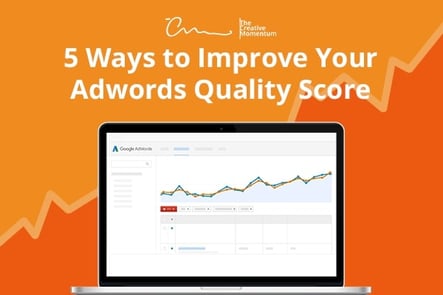In many ways, your AdWords Quality Score is the gatekeeper to a successful paid search marketing campaign. Google has a vested interested in keeping both its users and advertisers happy, and as such, must balance the ads that businesses want to promote with the user experience of the searchers. It accomplishes this by assigning a quality score to each keyword used in a marketing campaign. There are three primary factors contributing to this metric:
- Click-through rate
- Ad relevance to keyword or search query – relevance of keyword/search query to ad
- Landing page quality and relevance to keyword or search query
The success of these factors can make or break a marketing campaign. As such, all business owners should be invested in how to improve their quality score and get more out of their marketing budgets.
1. Work on Your Keywords
Keywords are the foundation of your AdWords campaign. Naturally, you should be adjusting your keywords to best align with the needs of your target market. To ensure that your quality score optimization efforts aren’t DOA, align your keywords logically across each of your paid ads and the landing pages they link to. Always keep the relevance of each ad in mind and ask yourself whether each keyword, paid ad, and landing page is consistent with one another and able to deliver the experience the customer wants.
2. Adjust Landing Pages
You’ll want your landing page to be highly relevant to the search queries and keywords used by your audience; make sure your on-page copy includes specific keywords from each of your targeted ad groups. Building connections between your keywords and your landing page guarantees that you’ll receive qualified traffic with high chances of conversion.
3. Avoid Dynamic Keyword Insertion
Dynamic Keyword Insertion (DKI) can be a useful tool, but if you’re trying to optimize an under-performing AdWords campaign, you may want to reconsider its use.
DKI isn’t always suitable for advertising with long-tail keywords, and can also expose marketers to a host of other problems that accompany automated ad campaigns. While it has its place in the AdWords world, you’ll have better luck creating your ads by hand.
4. Manage Your Bids
The keyword bidding process can be tricky. You don’t want to bid too low or too high. It can be tempting to bid low in hopes of decreasing your Cost Per Click, but bidding low often means ads placed in unfavorable locations on the page. On the other hand, most businesses can’t afford to outbid each of their competitors.
There is a middle ground, but finding it means finding the sweet spot in your own marketing that allows you to rank well without sacrificing your budget in the process.
5. Perform Ad Testing
As stated above, your ad copy needs to reinforce its target keywords as well as the landing page backing it up. Keep an eye on the performance of your ad copy. Test multiple variations against different keywords to find your best performing options. Conversion-driving ad copy isn’t always easy to achieve, but with enough tinkering and data to guide you in the process, you’ll see more clicks and a better AdWords quality score appear over time.
Competitive AdWords Quality Scores
Given that the exact algorithm behind the AdWords Quality Score is a secret that Google isn’t sharing, website owners will need to do some testing to get the most out of their ad campaigns. Experiment with different keyword variations, different bidding rates, and different types of ad copy. With a guided strategy, a stronger AdWords Quality Score is well within your reach.


